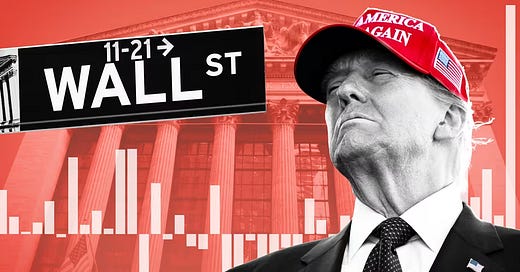(Published by JP Bouchaud | December 2024)
Since Trump’s election, investors appear to have poured $140 billion into US stock funds.
How much is the S&P500 expected to rise as a consequence?
If one believes, as I do, in the “Inelastic Market Hypothesis” (IMH) a.k.a. “Order Driven View of Markets”, the back of envelope goes as follows:
According to Gabaix & Koijen’s IMH, $1 invested in the S&P500 should, in and by itself, raise its overall value by $5 on the long run (say 6 months).
According to the microstructure justification of IMH, the multiplier is even larger in the short run, and depends on the corresponding fraction of daily volume. Trading 3% of the daily volume leads to a temporary impact that translates into a multiplier of say 25, that decays down to 5 after a few weeks, see my own paper.
The total market cap in the US is roughly $50,000 billion. Each day, roughly 0.5% of this amount changes hands, so average daily volume (ADV) is, say: $250 billion, or after 20 days of trading (one month since the election) this number is $5,000 billion.
The excess flow of $140 billion thus corresponds to 3% of ADV, so an instantaneous rise of the S&P500 of (25 x 140)/50,000 = 7%.
Maybe half of this impact has already dissipated, so let’s say that flows into stock funds alone have contributed to a rise of 3% of the S&P, which is indeed in the right ballpark (actual number is 5.3%).
Prices move primarily due to flows, independently of whether these flows are justified by fundamentals. This is at the heart of Shiller's excess volatility puzzle.
For more on this story, see our recent “Ponzi funds” paper.



